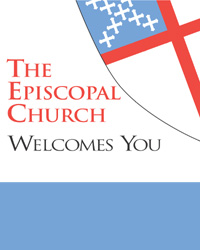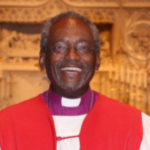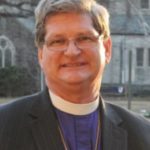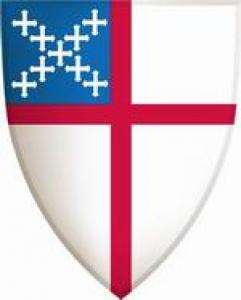In the beginning……..
Almost 2,000 years ago an itinerant Jewish rabbi teaching a radical version of an orthodox Jewish doctrine appeared in Palestine. He taught that you (each person) should love God with “all your heart and all your mind and all your strength” and should also love your neighbor “as (much as you love) yourself”. He also taught that God loves us, and he demonstrated God’s love by using that love to heal a large number of sick people with a variety of illnesses and even to restore a dead friend to life. This was Jesus of Nazareth. While he taught for probably no more than three years, Jesus made a startling impression on his followers, probably because he lived his teaching and radiated the presence of God.
He also made enemies, because he criticized the hypocritical religious leaders of the day and even went so far as to disrupt the lucrative business of selling “unblemished” sacrificial animals at the Temple in Jerusalem. His enemies denounced him to the local Roman governor as a dangerous revolutionary, and the governor, somewhat reluctantly, had him executed by crucifixion, a slow painful death reserved for the worst criminals.
His followers, men and women, then reported that, beginning three days after his death, Jesus appeared on a number of occasions to different groups of them and even on one occasion encouraged them to touch him to verify that he was real. Despite these miraculous events, however, his followers continued for a time to remain a band of frightened men, terrified that the fate of their leader might fall on them. This sad situation continued until, as Jesus had previously promised, the Spirit of God suddenly descended on them. At that moment they began fearlessly to preach a new Gospel — a teaching of belief in Jesus, now regarded as the Christ (the Anointed One), and repentance leading to the Kingdom of God and eventually to eternal life. On that day the Christian Church was born.
Over the hundreds of years since those events, thousands of individuals have accepted the message of Christ and have discovered a real and lasting transformation of their lives out of darkness into light. They have lost their fears, weaknesses and deceits and have discovered Love, Joy, and Peace — the very real fruits of the Spirit.
This is an important message that may well apply to you. Don’t overlook it. Christianity is not a psychology or a philosophy or a subjective system of beliefs; it is a discovery of what is really true. The Living God is at the center of reality. Jesus the Christ portrayed God correctly, and you can allow Him to find you, change you, and bring you into the Kingdom of God.
Christianity in England
In 597, some 40 monks set out from Rome to evangelize the Anglo-Saxons in England. Leading the group was Augustine, prior of their monastery in Rome, who was greeted by King Ethelbert. Laboring patiently, Augustine wisely heeded missionary principles—quite enlightened for the times—suggested by Pope Gregory the Great: purify rather than destroy pagan temples and customs; let pagan rites and festivals be transformed into Christian feasts; retain local customs as far as possible. The limited success Augustine achieved in England before his death in 605, a short eight years after he arrived in England, would eventually bear fruit long after in the conversions of England. Augustine of Canterbury can truly be called the Apostle of England.
The Church was a part of the universal, or “Catholic”, Christian Church. The Church in England looked to the four Gospels for the history of Christ, it expressed its beliefs in the Apostles’ and Nicene creeds, it regularly performed the Sacraments, and its bishops consecrated new bishops in a line of succession that ran unbroken from the original Apostles of Christ. As a matter of organization it also recognized the Bishop of Rome as the “Pope”, or the head of the universal Church.
In the sixteenth century a wave of reformation swept through the Christian Church in Europe. Beginning with Martin Luther a number of preachers criticized numerous Church practices, and several of these persons succeeded in forming new “Protestant” churches, founded in protest against current practices of the original Catholic Church. The world previously understood by medieval Europe was in turmoil.
In England, Henry VIII was a very orthodox Christian with a lifelong interest in theology. For his defense of Catholic theology, the Pope named him Defender of the Faith, a title every monarch to this day is named. However, an essentially unrelated event interjected itself into the religious turmoil of the day. Henry wanted the Church to annul his marriage to Catherine of Aragon, by whom he had no living male heirs, but the Pope, who at that point was surrounded by the armies of Catherine’s nephew, the Holy Roman Emperor Charles V, was in no position to oblige the king. Henry also needed money. He finally solved both problems by declaring that England no longer recognized the authority of the Pope, appointing himself the head of the Church in England, and sacking a number of wealthy monasteries. He made it clear that while the English Church was under new management, the Church beliefs and practices were to remain as he understood them — unchanged in all major matters though with a few minor shifts to accommodate his personal understanding. While the new arrangement satisfied Henry that he had withstood the storms of reformation emanating from the European continent, the arrangement merely postponed the problem.
When Henry eventually died, he was succeeded by his young son Edward, who, under the control of his mother’s family, was a fervent Protestant. While Henry had wanted the Church to remain essentially unchanged, the new king wanted to remodel the Church completely on the Puritan ideal. He never succeeded, probably because he did not live long enough.
After a short reign, Edward died and was succeeded by his sister Mary, a fervent Roman Catholic who considered it her highest duty to restore the authority of the Pope. She proceeded to pursue this goal vigorously, both by marrying the Roman Catholic king Philip of Spain and by burning several hundred dissenters at the stake.
Fortunately for England Mary’s reign lasted only five years, after which she was succeeded by her younger sister Elizabeth. During Elizabeth’s long reign the religious controversy was finally resolved in a compromise that preserved the essentials of the Catholic faith and named Elizabeth as the Supreme Governor the English Church. yet accepted some of the reforms demanded by the Protestants. The compromise, known as the Elizabethan Settlement, fully satisfied neither side, but it bought the time necessary for the furies of controversy to die down and ultimately determined the nature of the Church of England — fully a Catholic Christian church but one not recognizing the Bishop of Rome as the head of the Catholic (universal) Church.
The Episcopal Church
 The Episcopal Church in the United States derives from the Elizabethan Settlement within the Church of England. It was established after the American Revolution, when it became a separate church from the Church of England. By 1784, most states agreed on the need to draft a binding constitution for the whole church; revise the English Book of Common Prayer to make it appropriate for use in the American church; and (obtain consecration of bishops in Apostolic Succession to give the American Church proper episcopal oversight and ministry. The first bishop in this new church, Samuel Seabury, was consecrated by the Scottish bishops.
The Episcopal Church in the United States derives from the Elizabethan Settlement within the Church of England. It was established after the American Revolution, when it became a separate church from the Church of England. By 1784, most states agreed on the need to draft a binding constitution for the whole church; revise the English Book of Common Prayer to make it appropriate for use in the American church; and (obtain consecration of bishops in Apostolic Succession to give the American Church proper episcopal oversight and ministry. The first bishop in this new church, Samuel Seabury, was consecrated by the Scottish bishops.
The Episcopal Church is a part of the Anglican Communion, within which the Archbishop of Canterbury is recognized as the spiritual head. The Anglican Communion is a collection of many churches around. the world with its roots in the Church of England. The current archbishop is Justin Welby. He is the 105th in a line which goes back more than 1400 years to Augustine of Canterbury.
Unlike the Church of England, however, the Episcopal Church does not accord any special status to the King (or Queen) of England, or any government official. TEC (as the Episcopal Church is commonly called) elects a Presiding Bishop as the church’s overseer, respecting the authority of individual bishops over one’s own diocese. TEC is governed by Scripture and the Canons (laws) of the Episcopal Church, which are reviewed, created and approved every three years in General Convention, a bi-cameral meeting every three years of bishops, priests, deacons and lay people.
 The 27th Presiding Bishop is The Very Reverend Michael Bruce Curry, former bishop of North Carolina and the first African American elected to be Presiding Bishop.
The 27th Presiding Bishop is The Very Reverend Michael Bruce Curry, former bishop of North Carolina and the first African American elected to be Presiding Bishop.
 Grace Church is a parish in the Diocese of New Jersey, founded in 1785 and is the second oldest diocese in the Episcopal Church. The Right Reverend William (Chip) Stokes is the 12th diocesan bishop of New Jersey.
Grace Church is a parish in the Diocese of New Jersey, founded in 1785 and is the second oldest diocese in the Episcopal Church. The Right Reverend William (Chip) Stokes is the 12th diocesan bishop of New Jersey.
The Episcopal Church retains the four Gospels, the Apostles’ and Nicene Creeds, the Sacraments, and the Apostolic Succession, within which its bishops can trace their consecrations back to the original Apostles. Three principles– Scripture, Tradition, Reason—continue to guide the church today.
The Book of Common Prayer is a treasure chest full of devotional and teaching resources for individuals and congregations, but it is also the primary symbol of our unity. We, who are many and diverse, come together in Christ through our worship, our common prayer.
As Episcopalians, we are followers of Jesus Christ, and both our worship and our mission are in Christ’s name. In Jesus, we find that the nature of God is love, and through baptism, we share in his victory over sin and death.
The Mission of the Church Is the Mission of Christ
- To proclaim the Good News of the Kingdom
- To teach, baptize and nurture new believers
- To respond to human need by loving service
- To seek to transform unjust structures of society, to challenge violence of every kind and to pursue peace and reconciliation
- To strive to safeguard the integrity of creation and sustain and renew the life of the earth.
The promises we make in our Baptismal Covenant are reminders that we are not yet perfect, that we are called to move deeper in our faith and make a difference in our world. We do so together as the church, always professing that we will indeed live into our baptismal vows as followers of Christ, but always “with God’s help.”

